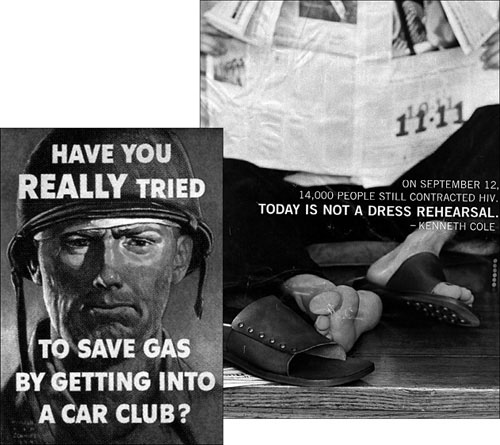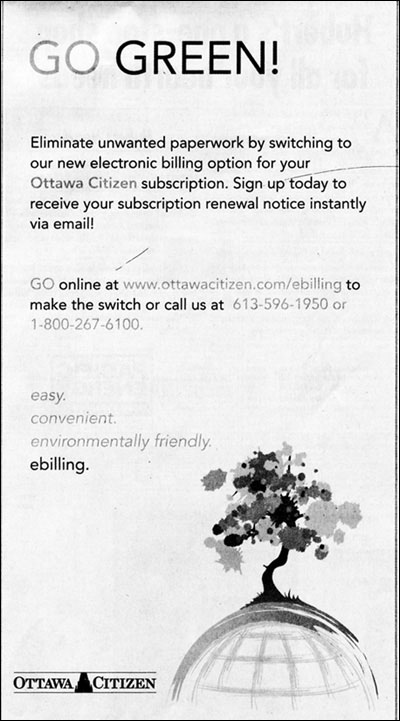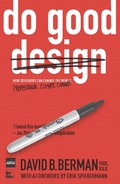Sudden events dominate the news, while ongoing crises fester: another day on Spaceship Earth
“Human population multiplied by aspirations for a middle-class existence divided by current technology is putting unsustainable strains on our planet.” | ||
| --ROBERT SHAPIRO, CEO, MONSANTO CORPORATION | ||
ALMOST 20 YEARS AGO, Canada’s most celebrated environmentalist, David Suzuki, explained to me that among all the amazing news being reported, the single largest story of our time is that humans have gained the ability to change the physical, geological, and atmospheric nature of planet Earth. What took 4 billion years to build, we are transforming, perhaps irrevocably, in just the last 400 years. In fact, people consumed more goods and services in the second half of the 20th century than in all previous generations put together.[36]

Taipei 101, briefty the world’s tallest skyscraper. Seismic activity in Taipei in the form of microearthquakes has increased significantly since construction began in 1997. It’s believed to be due to the piling of 700,000 tons of material in one spot.[37]
It was May 2000 when I began speaking at design conferences about the role of designers in irrevocably damaging our planet. Back then, I would spend my first 15 minutes making the case that environmental degradation, rather than a pandemic or a meteor from deep space, was the largest threat to humanity. Starting in September 2001, with New York mayor Rudy Giuliani urging Americans that his battered city needed “the best shoppers in the world” and President George W. Bush telling Americans to go shopping[38] to fight terrorism, it became more difficult to keep distracted audiences’ focus upon the daily realities about which we’ve become complacent.
Nearing a decade after that attack on the United States, mainstream news media and Web sites overflow with greener this and greener that, both in advertising and editorial. What does not get talked about enough are the root causes of environmental decay. Why are we consuming so much? Why are we consuming this and not that? The largest threats to our world today are rooted in overconsumption, spurred on by rapid advances in the psychology, speed, sophistication, and reach of communications technology. Designers are at the core of the most efficient, most destructive pattern of deception in human history.

Contrast this to America’s messages to its consumers during the Second World War
The United States of America is a world leader in teaching the dysfunctional practice of consuming more than we need. With Americans renting over 1.8 billion square feet of storage space outside their homes,[39] and almost a third of Americans storing an obese amount of extra mass on their bodies,[40] the biggest threat to our world’s environment is not the Port of New York’s largest export being waste paper[41] (much of it on barges headed for Antarctica); rather it is the export of an idea.

For some, 9/11 was just another reason to sell more stuff, and companies that produce nothing but image had little difficulty finding a way to turn a profit on jingoism
The idea involves, as William Wordsworth described it, a society focused on getting and spending. We have an unsustainable addiction to the consumption of stuff. In a vicious circle, the North American habit of living out of balance is perpetuated by addicting other peoples and cultures. The biggest pushers are multinational corporations. And it’s a pyramid scheme because the perpetrators hide the fact that we will run out of planet before everyone has achieved the desired lifestyle.
Like all pyramid scams, it is not a matter of if it will crash, but when. In 2008, to the detriment of everyone on the planet, the U.S. found itself exporting a financial crisis when the “when” arrived for the American lending market. The effects of an unprecedented level of mass greed among short-sighted lenders finally came home to millions of Americans. What initially appeared to be only a subprime mortgage crisis eventually revealed a case of subprime ethics pervading the entire lending infrastructure. And the sudden surge in U.S. homeowner debt did not rise spontaneously from some contagious bacteria infecting the brains of America’s workers; it began in meticulously and strategically crafted viral ad campaigns designed to persuade people to live beyond their means.
Consider Citicorp’s $1 billion award-winning[42] media campaign from 2001 to 2006 pushing second mortgages, which urged homeowners to take debt less seriously and borrow against their homes at high interest rates. The campaign used enticing visualizations of how their lives could look, combined with slogans such as “There’s got to be at least $25,000 hidden in your house. We can help you find it.” This traditional “last resort” form of borrowing, formerly associated with shame and the title “second mortgage,” was rebranded as clever “home equity financial planning”: a way to afford beautifully illustrated family vacations, shiny new SUVS, and colorful shopping sprees. The result was a thousand-fold increase in total U.S. home equity loans when compared to the early 1980s.
Ameriquest Mortgage Company splurged $2.5 million for their 30 seconds of “Don’t judge too quickly... we won’t” Super Bowl fame in 2004.[43] Ameriquest has since declared bankruptcy, walking away from its own debt as a record number of Americans are forced to walk away from their homes. In October 2008 alone, one in every 452 U.S. households received a foreclosure notice, as 84,000 properties were repossessed nationwide.[44]
The mortgage crisis is an example of a larger problem: overconsumption induced by irresponsible marketing inflates crises that endanger us all when the bubble bursts. I’m not speaking of an investment bubble such as we saw in the dot-com meltdown; but rather what futurist Tim O’Reilly (who coined the term “Web 2.0”) refers to as a reality bubble.[45] When the gap between how things really are and how things appear (the relentless illusion painted by an industry tirelessly eager to twist our behaviors) becomes wide enough, we must endure occasional and painful seismic corrections. There is no question that award-winning advertising designs are clever and even strategic in the short term. But a free market system runs most efficiently on freely flowing information, not mass deception and trickery.

There is strong scientific consensus that human activities are changing the Earth’s climate, that the Earth is getting warmer because of us, and that the warming is becoming increasingly harmful.[46] And yet industries threatened by environmental improvement spend millions promoting contrarians and disinformation to muddle the public opinion required to choose sustainability. Today, I no longer have to prove the case for the environment: I’ll leave that responsibility to Al Gore and David Suzuki, should you remain unconvinced that we are in the midst of a fundamental crisis. However, I would like to spotlight the urgency to design a better way, while our fate is still within our control.
Overconsumption is the leading driver toward an environmental shipwreck. Most to blame are those in the Western World simultaneously consuming the most per capita, while convincing the larger, faster-growing populations of the Developing World to consume more and more.
“It isn’t pollution that’s harming our environment: it’s the impurities in our air and water.” | ||
| --GEORGE W. BUSH | ||
The most powerful weapon we’ve invented to convince new markets to consume more stuff is brand advertising. It’s cheaper to stretch an existing brand than to invent a better product: each year, 95 percent of the 16,000 new American brands are actually extensions of existing ones.[47] Professional communicators are the people who proudly think up clever visual persuasions intended to trigger deep emotional needs to increase consumption. Meanwhile, product designers ingeniously develop more and more stuff, and clever new processes to increase production.
Some consumption is normal and fun. However, overconsumption is a learned addiction that will not be fixed solely by “greening” every process and product: we have to stop finding clever ways of convincing each other to pick up this bad habit.
The environment is the biggest issue of the day, and the single greatest force perpetuating environmental decline is the collateral damage caused by the drive toward worldwide overconsumption. It is that simple: humans consuming too much stuff are causing us to tear at the earth, upset the oceans, melt the poles, and litter our sky. And the more people who buy in, the worse it becomes. We’re running out of space and we have no off-site backup. The future of everything humankind has accomplished since the invention of civilization hinges upon the wisdom we show in our lifetimes.

Greenwashing 101: For many days, my local newspaper printed 150,000 copies of this quarter-page ad, urging those readers who subscribe to “go green” by choosing electronic billing: avoiding two sheets of paper a year. Over 100 pages of shopping flyers accompanied most of the issues.
So, will we make the choice now to continue to indulge in the proud, unbounded expression and consumption of design, or will we take up our role in helping to design a better future for all?
“Designers make the world’s most beautiful trash.” | ||
| --SCOTT EWEN, ÉMIGRÉ | ||
In 2003, Steven Rosenberg (a cofounder of the Graphic Designers of Canada’s Social Action Committee in the 1990s), convinced me that if cats had thumbs they would rule the world. But since they can’t grip a pen, they can’t draw pictures or write stuff down. That inability to record information forces the species to freshly reinvent their history in every generation.

Humankind’s dominion over the Earth is due to our species’ unique gifts: our innate mastery of language and our ability to record it. These qualities allow us to share information over great distances and across generations. We imagine the future, designing civilization on the shoulders of those who came before us.
Professional communicators and designers have stewardship of the huge responsibility that accompanies these gifts, and we have much to be proud of.
For those humans who can’t grip a pen, we invent tools that remedy this challenge. The girl pictured on this page is using technology designed for quadriplegics. A person without the use of their arms or legs can surf the Internet by combining neck movements with sipping or puffing air through a tube.

Such innovations represent perhaps the greatest liberation in human history. In the past 50 years, more people with disabilities and difficulties have been liberated from marginalized lives by technology and design than the number liberated by any revolution or war.[48]
When the idea of cutting an angle in the curb at street corners was first proposed to help people in wheelchairs, the cost was widely considered extravagant, as so few people in wheelchairs were in the streets. However once curb ramps were in place, more wheelchairs turned out to use them. A market for ruggedized electric wheelchairs emerged, and the ramps are now appreciated by anyone who has ever had to drag their luggage onto the subway.
Time and again, designing for the extremes results in benefits for all. In 1886, after having trouble remembering things in school, Herman Hollerith designed punched cards to help compensate for his cognitive processing deficit. At that same time, the U.S. Census Bureau was struggling to comply with the U.S. Constitution’s requirement that a census be taken every 10 years. Hand counting the growing number of Americans would take more than a decade to finish! So they turned to Hollerith’s punch cards for help. His Tabulating Machine Company would later be rebranded IBM.

Here’s another case of how accommodating disabilities and difficulties can help everyone. In 1948, three Bell Labs scientists in New Jersey sought to build a hearing aid that would be less conspicuous, cheaper, and consume less power. They created the transistor. A Japanese company, now Sony, licensed the technology for $25,000 and invented the transistor radio. Later the transistor was essential to putting people on the moon and computers in our laps.
“Over the next 10 to 15 years, technology has the capacity to virtually eliminate barriers faced by people with disabilities in the workplace.” | ||
| --STEVE BALLMER, MICROSOFT | ||
Vinton Cerf, the “father of the Internet,” has been with Google since 2005. Back in 1972, he was working on the core protocols of ARPANET, the Internet’s predecessor. Cerf had a hearing impairment, and his wife was deaf. He was so intrigued with the possibility of sending text messages to her through the computer network that he invented an electronic mail protocol.
The couple had unknowingly given birth to the Internet’s “killer app.” The resulting proliferation of the Web has transformed the delivery of most content to a medium that can easily be designed to transcend visual, auditory, dexterity, and cognitive impairments.
We live in a post-Darwinian world where the human species has all but stopped evolving genetically, due to advances in medicine, technology, and recorded knowledge. Genes that would tend to disappear due to “survival of the fittest” are now almost as likely to continue on, because society has become so much better at not leaving anyone behind. At the same time, we have figured out how to accelerate cultural change with mass-produced goods and mass communication. While our natural urges drive us to reproduce, our professional urges drive us to create ideas (and activate them through design). Survival is increasingly dependent on technology, and less so on natural forces.
Indeed, we live in a time where we can easily leave a greater mark by propagating our ideas than by propagating our genetic material. Though so much human activity is driven by the instinct to reproduce our personal DNA, we can now pass on a more influential legacy by designing an idea and sharing it with millions, whether through mass production or the reach afforded by information technology such as Vinton Cerf’s brainchild.
